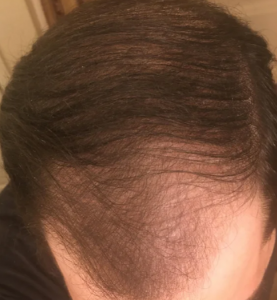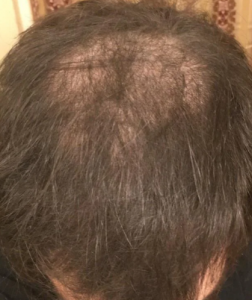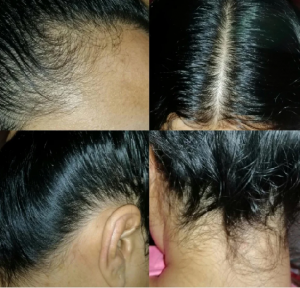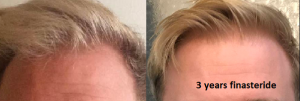When doing a hair transplant, is it a good idea to also put hair into good hair areas that will eventually fall out?
Thinking about taking minoxidil for my hairline but in the past I had some issues with my heart racing. Also I’m an athlete so heart is always pushing. Do you guys think it’d be a bad idea to start? Should I use topical or oral? Thanks for your input!
Minoxidil is a hypotensive agent so it can cause palpitations. If you had palpitations before taking minoxidil, maybe this medication is not for you. Check with your doctor
I’m about soon to reach two years of Finasteride (1.25 mg per day) usage. My hair loss has continued and I now have a diffused crown, which I did not have when I started the treatment.
I’m gonna reach out to my doctor and ask for a prescription of Dutasteride.
It would be great if someone with more experience than me could introduce me on how to add Dutasteride to my daily intake of Finasteride. Should I give up on Finasteride completely once I start taking Dutasteride? I was reading somewhere that a good start is to take Dutasteride once per week and then take Finasteride the rest of the week.Let’s keep the discussion to just Finasteride and Dutasteride. I have used the 3-big, a lot of supplements, oils, thyroid function test, PRP etc etc. Nothing has really worked for me to stop the hair loss.
If you are going to take dustasteride, then there is no need for finasteride. Dutasteride does the same job as finasteride for hair loss. By doubling down, you are increasing the risks of all sorts of side effects
I have read of some people seeing no impact on their beard development whatsoever from taking finasteride whilst other peoples beards have completely halted growth of new hair. I understand the impact finasteride has on ones beard is different in every case but will topical finasteride have the same impact as oral? Thanks
No, as a good topical liposomal finasteride will stay in the scalp and will largely not go systemic. A patient of mine last week told me he checked his DHT level on topical liposomal finasteride and there was no change in the DHT level he measured before going on this topical drug
I having been thinning for a while but holding my own with topical treatments. I started TRT earlier this year and I’m losing the battle. Looking at making an appointment to discusses hair restoration. I am located in Kansas City but willing to travel in the US to get it done. How does one go about finding a reputable surgeon for this?
TRT causes hair loss. Be careful, even with a hair transplant, if your inherited pattern is advanced, even a hair transplant might not save you from more hair loss needing more transplants down the road.
Recently I’ve been shedding a lot of these really fine, almost invisible hairs, as well as some normal looking ones and others with different textures than my natural hair. I’ve been shedding for at least a few weeks, and the shedding has kinda increased in intensity over time. I’ve been on 1.25 mg finasteride daily for 3 months and I’m definitely below baseline, so that kinda sucks. I went to a dermatologist a month or so ago and got diagnosed with MPB, Telogen effluvium, and Seborrheic dermatitis.
For treatment, I’ve been doing prescription Ketoconazole 2% shampoo 1x week, Free & Clear Anti-Dandruff Shampoo (has Zinc Pyrithione 2%) 1-2x week. I typically shampoo every other day or every 2 days, and on the off days I do nothing or just rinse my hair with cool water. So far the treatment for the dandruff hasn’t really helped, so I don’t know what to do about that.
I also have recently, like in the last few days, started using minoxidil on my temples and hairline because they’ve always been pretty bad, and I don’t want them to recede any farther lol.
So besides all that ,my question is: is prolonged shedding at 2-3 months finasteride, and to go below baseline, normal? I just want it to stabilize at this point lol it’s a rough situation. Maybe I should lower my finasteride dose? It’s hard to tell what’s making the shedding worse because there’s a lot of variables like diet, new medications other than fin., and telogen effluvium (which will go away with time, but I’m around 2-3 months post-op from surgery so I could be getting hit with another wave of it).
Another question: is there anything else I can do at this point? It just feels kinda helpless and bums me out. I don’t have another derm. appointment for a while so I don’t know what to do about the dandruff not going away.
There is no normal for a finasteride shed, but that usually stops in less than 3 months. Your hair loss may be your genetics run wild. You should not reduce your dose and you are correct to go back to see your doctor. The shed from finasteride suggests that it is working
Retrograde alopecia is found not-infrequently in men who are balding impacting the neck hair and at times the side hair above the ears. There is little that can be done for this as it doesn’t respond to finasteride or minoxidil. This can happen at any age and if someone were to use this hair as donor hair for a hair transplant, it will disappear so it should never be used as donor hair for a hair transplant. We have performed Scalp Micropigmentation which works well to camouflage this condition, but it is not hair and hair styling at the back of the head should be adjusted to allow good blending to occur.
I just read this super friendly discussion about whether or not you need to take finasteride after a hair transplant and I’m kinda curious about who’s in the right.
Finasteride will prevent the loss of native hair that has miniaturized after a hair transplant. Without it, you run the risk of loss of your miniaturized hair.
The use of small clips attached to real hair is applied to the miniaturized hairs on this man’s scalp. Eventually, the weight and the pull, will cause more hair loss of his original hair. Women do this commonly and I believe that Donald Trump did this at one time.
what is this procedure? they gave this bald man hair from tressless
Alopecia Areata is a disabling disease for those afflicted. A new treatment is now going through clinical trails. Read about it here: https://www.nejm.org/doi/full/10.1056/NEJMoa2110343
Without the same hair style, it is difficult to see the detailed difference between these two photos; however after 3 years at a minimum, this man held on to his hair from finasteride use and that says a lot for this drug. I suspect that if he stopped it, he might lose more of the hair in the front of the head much giving him more balding than it was 5 years ago.
From digging around various hair forums it’s clear there is a generally negative feeling towards PRP as a treatment for MPB. From my limited knowledge on the area though it’s seems like this stems from unrealistic expectations around it regrowing lots of hair. Pretty much every study I can find on it reports statistically significant positive effects in terms of growth and density. Neither may be enough to make a different aesthetically but if at the very least it maintains then it seems like a pretty solid (though expensive) treatment option.
The studies all use fairly limited numbers of participants (< 50) and only really cover up to 2 year time frames but results are pretty consistent.
Am I missing something or is this a legit option for people who want to maintain but don’t handle the DHT blockers well?
PRP is thought by experts, like me, to have little value for genetic hair loss other than the microneedling that goes along with it.
There are millions of finisteride users in the US. The document here: https://clincalc.com/DrugStats/Top300Drugs.aspx suggests 3 million users per year in the US.
Can these be excised and replanted? I’ve got some singles at the front of my hairline but the hairs are maldirected and the hairline is too low. Can I repair this? Will I have scars at the front of my hairline? My hairs seem to turn radially along with my hairline instead of pointing forward. This isn’t normal, right? It seems like things should just be more forward pointing instead of radially pointing.
Can any well trained, experienced hair tech remove them with a manual punch and redesign my hairline? I know this is a hard problem to fix, I’m looking for advice
A skilled surgeon can use the FUE technique to remove recipient site grafts when they are positioned improperly. Radially placement of grafts is far too common. When I train doctors, I have to drive the point that hair is not like a bicycle wheel with the center being the top of the head. Hair between the parts are parallel to each other and point forward almost horizontal in the very front of the hairline.




